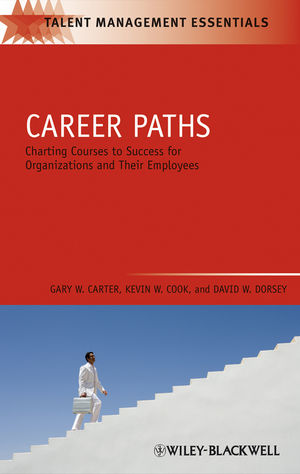Career Paths: Charting Courses to Success for Organizations and Their EmployeesISBN: 978-1-4051-7733-7
Hardcover
176 pages
May 2009, Wiley-Blackwell
 This is a Print-on-Demand title. It will be printed specifically to fill your order. Please allow an additional 10-15 days delivery time. The book is not returnable.
Other Available Formats: Paperback
|
||||||
Preface xiii
Chapter 1 Introduction 1
What are Career Paths? 2
The Goal of This Book 19
Overview 21
Chapter 2 A Conceptual Toolkit for Constructing Career Paths 23
Career Path Attributes 26
Career Path Patterns 27
Outcomes 29
The Bottom Line 31
Chapter 3 A Practical Toolkit for Constructing Career Paths 33
Sources and Methods 34
Past 34
Present 37
Future 37
A Note about the Special Role of Interviews and Focus Groups 38
How to Construct Career Paths 39
Initial Steps 39
Sequential List of Positions or Roles 47
Qualifi cations 53
Critical Developmental Experiences 54
Competencies that are Accrued, Strengthened, or Required 56
Career Success Factors 60
Other Information 63
Explicit Focus on Movement 64
Promoting Alignment 64
Assessment of Personal Attributes and Career Paths 64
Implementation Tips 65
The Bottom Line 67
Chapter 4 Integrating Career Paths into Talent Management Systems I: Recruitment, Hiring, Retention, Promotion, and Employee Development 69
Connecting the Employee to the Organization 69
Engaging the New Workforce 72
Recruitment and Hiring 73
Retention 80
Promotion 81
Development Planning and Execution 83
The Bottom Line 89
Chapter 5 Integrating Career Paths into Talent Management Systems II: Strategic Workforce Planning, the Early Identifi cation and Development of Executive Talent, and Succession Management 91
Keeping an Eye on the Big Picture 91
Strategic Workforce Planning 92
Identifying and Developing Early-Career, High-Potential Leadership Talent 95
Who Are Our High Potentials? 95
How Can We Develop (and Promote) Them Faster? 97
Managing Communications Regarding High Potentials 98
Succession Management 99
Evaluating Readiness for Promotion in the Context of Succession Management 101
Methods for Evaluating Readiness 102
Keeping Those "Not Yet Ready" on the Path(s) to Get There 102
The Bottom Line 105
Chapter 6 Expanding Success Beyond the Individual Organization – Industry and Economic Development Perspectives 107
Career Paths and the Industry Perspective 109
Examples 110
Differences between Industry Career Paths and Organizational Career Paths 116
Career Paths and the Economic Development Perspective 118
Examples 120
Differences between Career Paths Designed for Economic Development Purposes and Organizational Career Paths 124
Labor Market Analyses and Analyses of Cross-Occupation Requirements 125
Labor Market Analyses 125
Analyses of Requirements across Occupations 126
The Bottom Line 127
Chapter 7 Looking to the Future 129
Trend One – Demographic Trends 130
Implications for Organizations 131
Trend Two – Technology 132
Implications for Organizations 134
Trend Three – Globalization and Changing Organizational Structures 134
Implications for Organizations 135
Trend Four – Defi ning Career Success 136
Implications for Organizations 136
The Bottom Line 137
Career Path Resource List 139
Notes 143
References 147
Name Index 151
Subject Index 153



